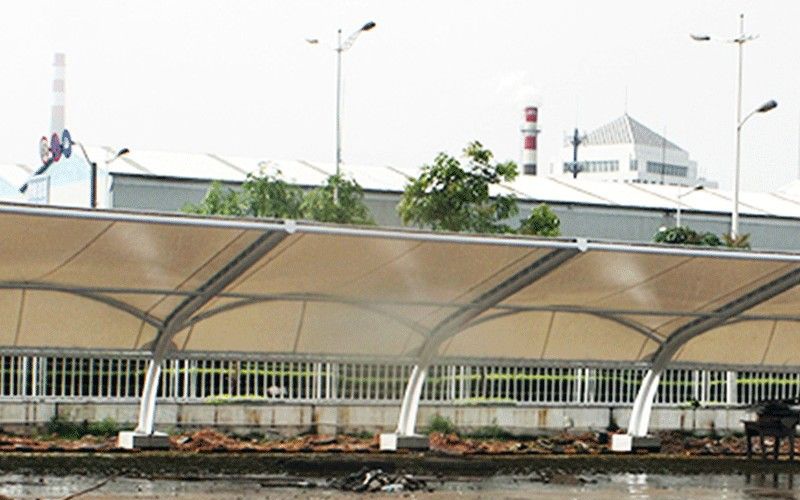PVDF tensile membrane structures lead a shift toward lighter, more dynamic, and more sustainable building solutions. Architects and developers increasingly choose these structures for their flexibility, aesthetic appeal, and long-term performance. Whether for airports, stadiums, or urban plazas, PVDF membranes deliver both form and function without compromise.
Let’s explore how designers use this material to reshape modern architecture and what trends now define the future of PVDF membrane architecture.
1. Architects Shape Sculptural Forms with Functional Strength
Modern architects design PVDF tensile membrane structures that look like art while supporting large spans. These sculptural forms go beyond aesthetics—they reduce material use, lower structural weight, and create expansive, open-air spaces. Because PVDF-coated fabrics stretch without tearing, engineers can create curves, folds, and asymmetric lines with ease. This flexibility makes complex structures practical and cost-effective.
2. Designs Use Natural Light and Integrated Illumination
Designers increasingly choose PVDF architectural membranes for their light-transmitting capabilities. These structures brighten interiors with natural daylight, reducing energy costs and improving visual comfort.
At night, designers often add LED lighting systems. When integrated into the membrane, these lights turn the structure into a glowing architectural centerpiece. Malls, transport hubs, and exhibition centers benefit from this dual-use feature—shelter by day, landmark by night.
3. Builders Prioritize Sustainable Materials and Construction
PVDF tensile membranes support sustainability goals from design through operation. Their lightweight nature cuts down on foundation materials and reduces shipping and installation costs. Because PVDF materials resist UV rays, dirt, and chemicals, they maintain appearance with minimal maintenance. Additionally, engineers can recycle these membranes after years of service. Some projects now add solar modules or natural ventilation systems to enhance energy efficiency even further.
4. Hybrid Structures Combine Membranes with Metal and Glass
Architects often pair PVDF membrane systems with other materials like steel and glass to build hybrid structures. This combination delivers the best of both worlds—lightweight tensile elements with strong, durable framing. In airports or arenas, hybrid roofs span massive areas while still allowing daylight and ventilation. These setups also support modular construction and easy future expansion.
5. Developers Embrace Custom Colors and Branding
Modern projects rarely settle for plain white membranes. Manufacturers now offer PVDF coated fabrics in a range of colors and can even print logos or digital artwork directly on the surface.
Brand-conscious clients use colored membranes to match their corporate identity or make the building a visual landmark. Event venues, retail centers, and theme parks benefit most from this trend.
6. Engineers Introduce Smart Membrane Technologies
Innovation in membrane materials now includes smart PVDF fabrics that interact with the environment. Some new membranes adjust transparency based on sunlight or include embedded sensors to track stress, temperature, or performance.
These technologies give facility managers real-time data while making the structures adaptive and responsive. Though still emerging, smart membranes represent the next step in architectural performance.
7. Contractors Use Modular Systems for Faster Installation
Project timelines continue to tighten, and PVDF membrane structures help meet deadlines. Manufacturers pre-cut and pre-seal panels off-site, allowing crews to assemble them quickly on location.
Contractors appreciate these modular systems for temporary structures like expos and festivals, as well as for permanent roofs and walkways. The speed of installation reduces labor costs and keeps projects on schedule.
Conclusion: Membrane Architecture Moves Architecture Forward
PVDF tensile membrane structures blend design freedom, sustainability, and performance. Architects now rely on them to create futuristic, functional, and energy-efficient environments. From bold rooflines to branded canopies, these systems continue to redefine what buildings can do.
With the right planning and materials, you can turn PVDF membranes into more than just a cover—they become a signature element of your architectural vision.

